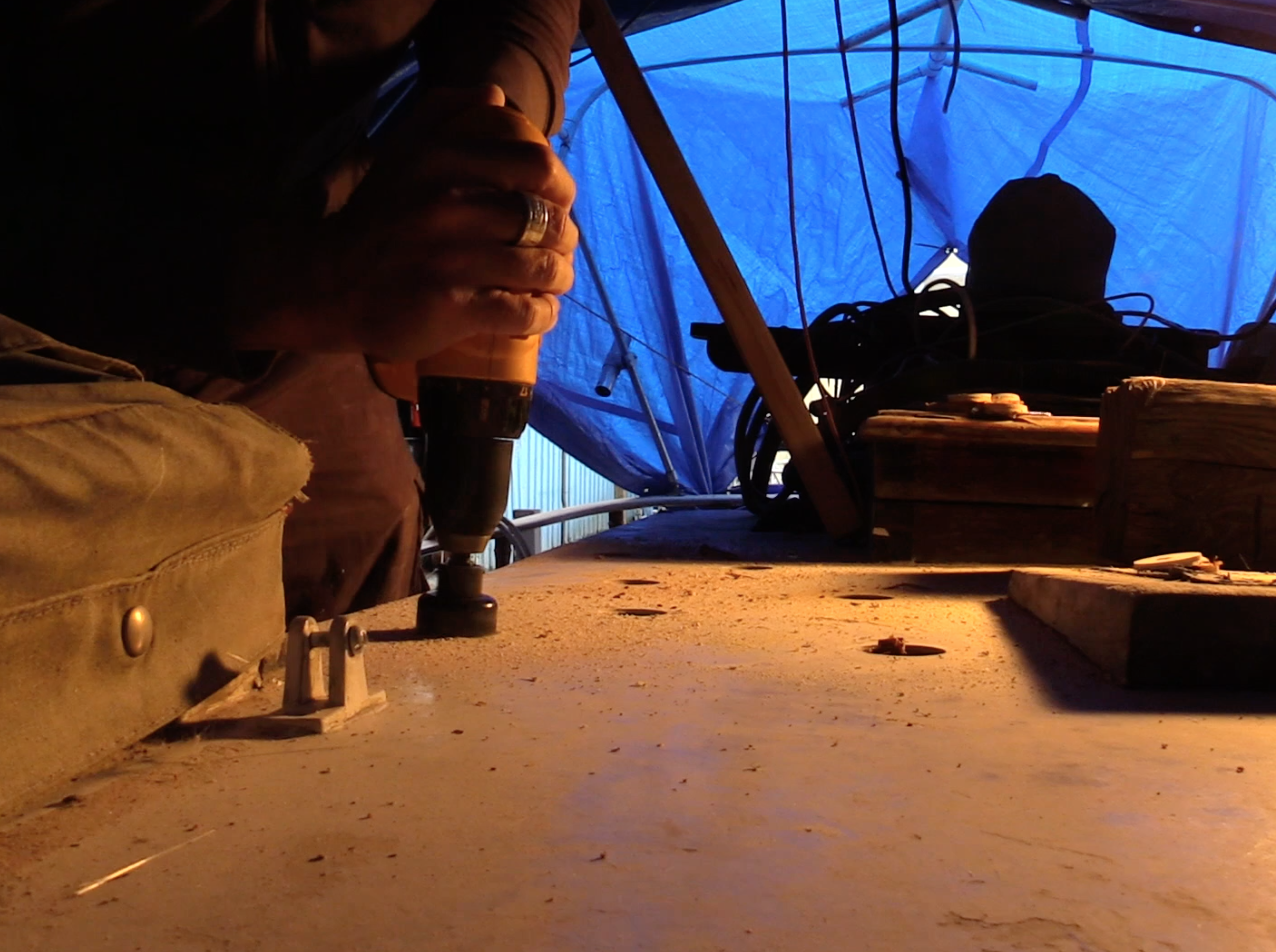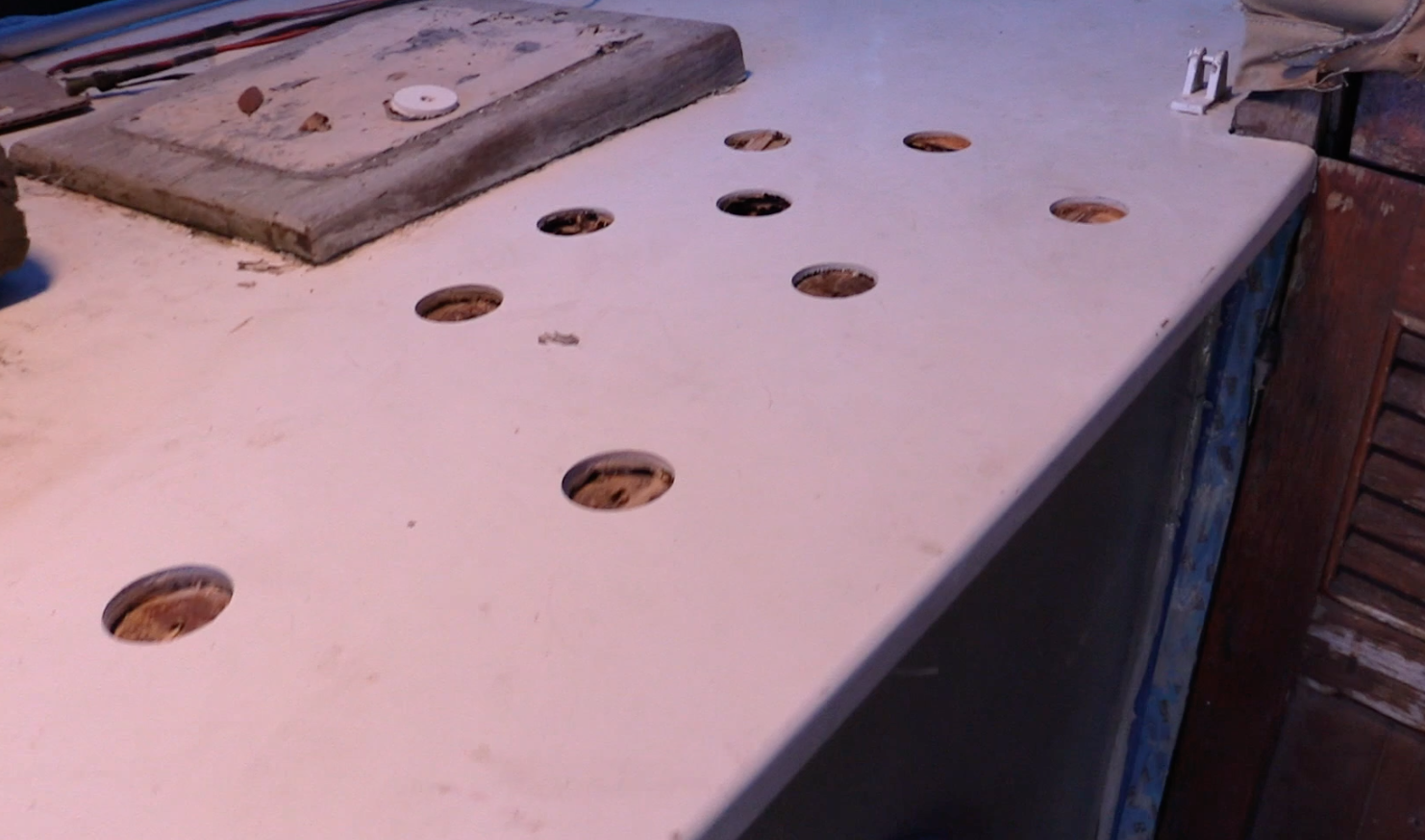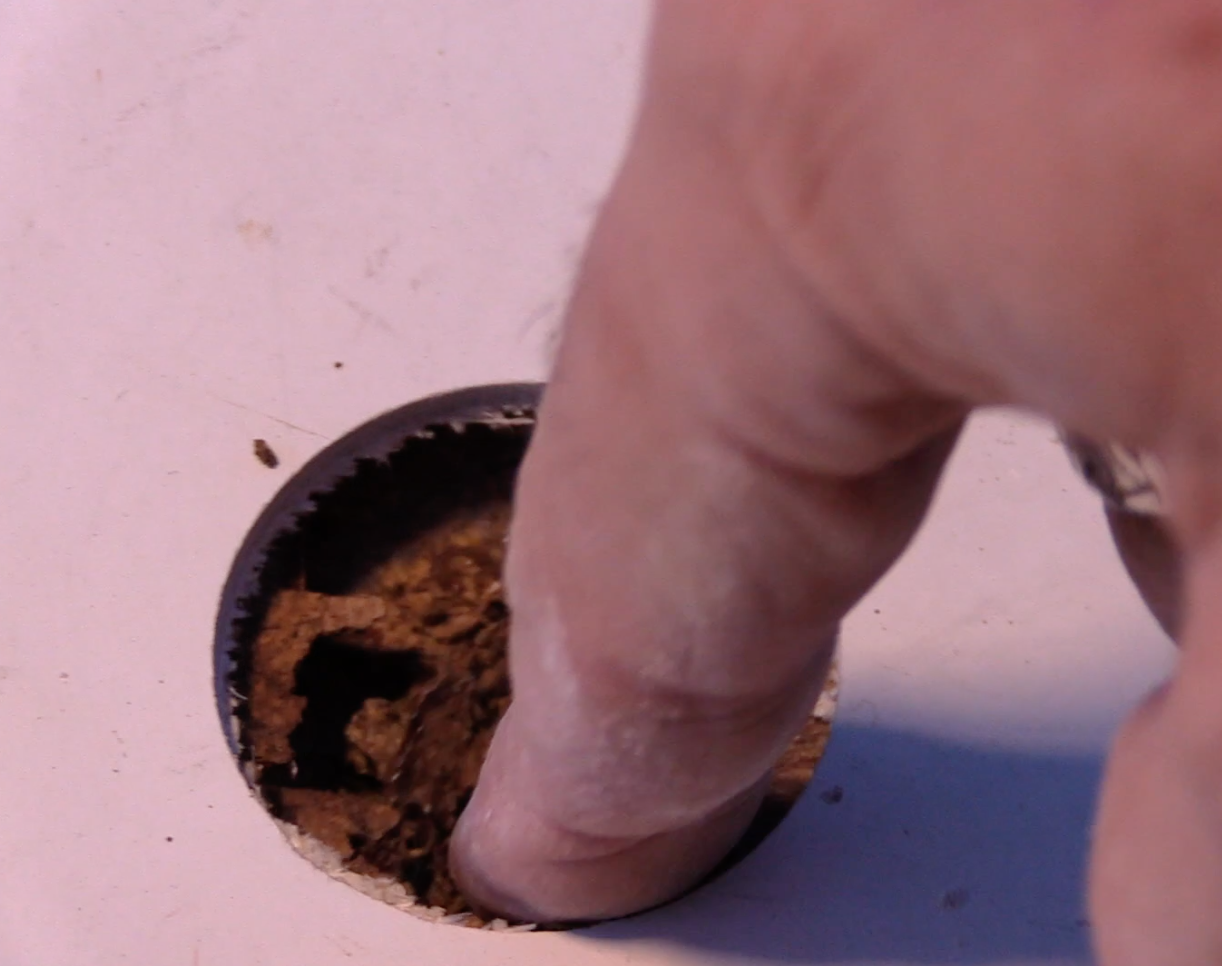One of the things we have done previously on our boat was to inspect the core in the deck. We were pleasantly surprised when we did it because the core was a hardwood rather than rotted plywood. Our experience speaking to other Formosa Owners, most had plywood core that had to be replaced, but since ours was hardwood, it was wet, but not rotted.
 The first step in identifying core rot is usually the slight give you feel when walking on the deck. If you’re like me, you would stand up on the balls of your feet and bounce a little bit to see if you felt a little “give.” I have found that if I walk barefoot, I seem to be able to “feel” spots with a little bit of give easier. Once I have a place that I think may be soft, I then do a tap test where I use the butt end of a screwdriver or small hammer and tap to hear the difference in the sound. Soft spots or sections of the deck that are delaminated, meaning that the fiberglass skin has separated from the core below, will sound like a dull thud, versus a sharp, solid sound. We did a video on this tap test with the surveyor in a previous blog post.
The first step in identifying core rot is usually the slight give you feel when walking on the deck. If you’re like me, you would stand up on the balls of your feet and bounce a little bit to see if you felt a little “give.” I have found that if I walk barefoot, I seem to be able to “feel” spots with a little bit of give easier. Once I have a place that I think may be soft, I then do a tap test where I use the butt end of a screwdriver or small hammer and tap to hear the difference in the sound. Soft spots or sections of the deck that are delaminated, meaning that the fiberglass skin has separated from the core below, will sound like a dull thud, versus a sharp, solid sound. We did a video on this tap test with the surveyor in a previous blog post.
Once your tap test has isolated an area of possible concern, it is time to determine the severity of the problem. Is it delamination or rotted core. Each of these may have a different course of actions. For sections that are relatively small and just delaminated, it is possible to re-attach the top layer of glass and fix the issue. If the core is rotted, it may require a more labor-intensive solution, but before you can determine next steps, you have to know what is happening below that surface.
 We drilled 1 and 1/2″ holes through the top layer of fiberglass to see what was going on. After my tap test, I determined that the area of concern was about a foot wide and 2 feet long, so I drilled a series of holes in this area to expose the core below. In the photo here you can see that I drilled nine holes and spread them out based on what I saw after cutting each one. I just drilled the holes deep enough to go through the top layer of glass but not so far that we cut all the way through the lower fiberglass skin. If you notice, some of the holes appear to have a darker color. Those areas appear to have rotted core.
We drilled 1 and 1/2″ holes through the top layer of fiberglass to see what was going on. After my tap test, I determined that the area of concern was about a foot wide and 2 feet long, so I drilled a series of holes in this area to expose the core below. In the photo here you can see that I drilled nine holes and spread them out based on what I saw after cutting each one. I just drilled the holes deep enough to go through the top layer of glass but not so far that we cut all the way through the lower fiberglass skin. If you notice, some of the holes appear to have a darker color. Those areas appear to have rotted core.
If the core was all solid, then this repair could be as easy as pouring a liquid epoxy into the holes and “lifting the skin up to allow the epoxy to run along the surface of the core and saturate it and remain wet so that the top skin is also wet. Pressure should be applied to ensure the layers bond together. This can be done by placing something substantial on the deck or through bolting and putting a sacrificial backing plate on it.
 In our case, it wasn’t just delaminated, but rather an issue with Rot. (For some foreshadowing here, we believe this may have been termite damage, but more on that when we get deeper into this project.
In our case, it wasn’t just delaminated, but rather an issue with Rot. (For some foreshadowing here, we believe this may have been termite damage, but more on that when we get deeper into this project.
In this closeup photo, you can see I can push my finger right through the layers of plywood. Plywood is, as the name indicates, multiple plies or layers of wood glued together in opposing directions to increase the strength. As you can tell by the photo, it is just wholly crumbling beneath the gentle pressure of my finger. If this kind of damage was isolated to a minimal area, perhaps below a screw that allowed moisture to get to the core, it could be infused with Epoxy resin, and that would turn the wood into a solid epoxy mass and be a good repair. Epoxy can not displace water, so this type of repair can only be done if the wood is completely dry and the epoxy can soak into the wood. Think of soaking a sponge in epoxy and having it harden to a solid brick. That is kind of what happens with the core. There is a product called Git-Rot that is what they call a “penetrating epoxy,” which means it is less viscous than other epoxy solutions. Git Rot is pricey but works great and comes in pint and quart size kits depending on the size of the repair. It can run into and travel through wood grain easier. We did a video on how to use GitRot on a bulkhead repair many years ago on our previous boat.
Our damage is a bit more extensive, so we are going to make a larger slightly more complex repair.

